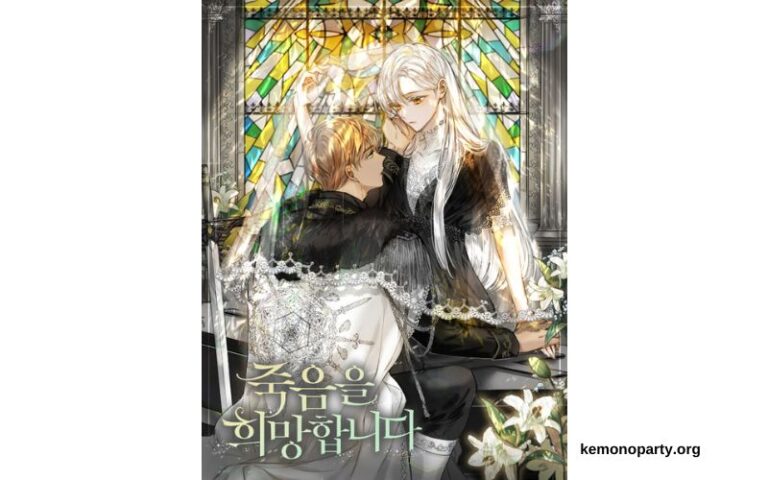“Hoping for My Death” (死にたいわ, “Shinitai wa”) is a compelling manga series that delves deep into the complexities of human emotions and the fragile nature of life itself. Written and illustrated by the talented mangaka, Ai Uzuki, this series has garnered significant attention since its debut in 2018. With its thought-provoking narrative and beautifully detailed artwork, “Hoping for My Death” has resonated with readers across various demographics, exploring themes of existentialism, mental health, and the search for meaning in a seemingly indifferent world.
Overview of “Hoping for My Death”
The manga follows the life of Ayumu Kurosaki, a high school student who finds himself grappling with intense feelings of hopelessness and despair. The story unfolds as Ayumu navigates through his daily life, struggling to cope with the pressures of academic expectations, social relationships, and his own internal turmoil. The title itself, “Hoping for My Death,” reflects Ayumu’s profound desire to escape from the overwhelming pain and emptiness he feels, yet also hints at a deeper exploration of what it means to truly live.
Themes Explored in “Hoping for My Death”
1. Existential Angst and Identity Crisis
Ayumu’s character embodies the existential angst experienced by many adolescents and young adults. He questions the meaning of his existence, grappling with feelings of alienation and disconnection from the world around him. Through Ayumu’s journey, readers are invited to ponder their own sense of identity and purpose in an increasingly complex society.
2. Mental Health and Social Stigma
The manga bravely confronts issues surrounding mental health, portraying Ayumu’s struggles with depression and anxiety in a sensitive and nuanced manner. It sheds light on the stigma often associated with mental illness, emphasizing the importance of empathy and understanding in supporting those who are suffering.
3. Loneliness and Human Connection
Central to the narrative is the theme of loneliness and the profound impact of human connection. Ayumu’s interactions with friends, family members, and even strangers highlight the significance of companionship and emotional support in navigating life’s challenges. The manga explores how genuine relationships can provide solace and hope amidst adversity.
4. Art as Catharsis
Ai Uzuki’s artwork plays a pivotal role in conveying the emotional depth of the story. The illustrations are poignant and evocative, capturing the raw intensity of Ayumu’s emotions and inner turmoil. The manga’s visual style enhances the reader’s immersion in Ayumu’s world, inviting them to empathize with his struggles and contemplate the complexities of the human experience.
Cultural Impact and Reception
“Hoping for My Death” has garnered praise for its realism and emotional authenticity, resonating with readers who appreciate its candid exploration of difficult subject matter. The manga’s portrayal of mental health issues has sparked important conversations within the literary community and beyond, contributing to greater awareness and understanding of these issues in Japanese society.
Critical Analysis and Interpretation
1. Symbolism and Imagery
Throughout the series, Ai Uzuki employs symbolism and imagery to convey deeper layers of meaning. From recurring motifs such as shadows and reflections to subtle visual cues, these elements enrich the narrative and invite readers to interpret Ayumu’s journey through their own perspectives.
2. Narrative Structure and Character Development
The manga’s narrative structure is deliberate and introspective, allowing for gradual character development and emotional depth. Ayumu’s evolution from despair to a tentative sense of hope is depicted with sensitivity and nuance, highlighting the complexities of personal growth and resilience in the face of adversity.
3. Social Commentary and Reflection
Beyond its narrative arc, “Hoping for My Death” offers a poignant commentary on contemporary social issues and the pressures faced by young people in modern society. It encourages readers to reflect on the importance of empathy, self-acceptance, and seeking help when needed, fostering a dialogue about mental health and emotional well-being.
Conclusion
In conclusion, “Hoping for My Death” stands out as a profound and introspective manga series that explores the universal themes of existentialism, mental health, and the search for meaning. Through its compelling narrative and evocative artwork, Ai Uzuki invites readers on a poignant journey of self-discovery and emotional resilience. The manga’s impact extends beyond entertainment, encouraging reflection and empathy while addressing significant societal issues. As readers delve into Ayumu Kurosaki’s story, they are reminded of the transformative power of storytelling and the enduring quest for hope in the face of adversity.
Whether you are drawn to its artistic merit, its thematic depth, or its relevance to contemporary social discourse, “Hoping for My Death” continues to captivate audiences with its poignant exploration of the human condition. As Ai Uzuki continues to weave Ayumu’s narrative, one thing remains clear: the manga’s enduring legacy lies in its ability to resonate with readers on a deeply emotional and introspective level, leaving a lasting impression that transcends the pages of a comic book.


